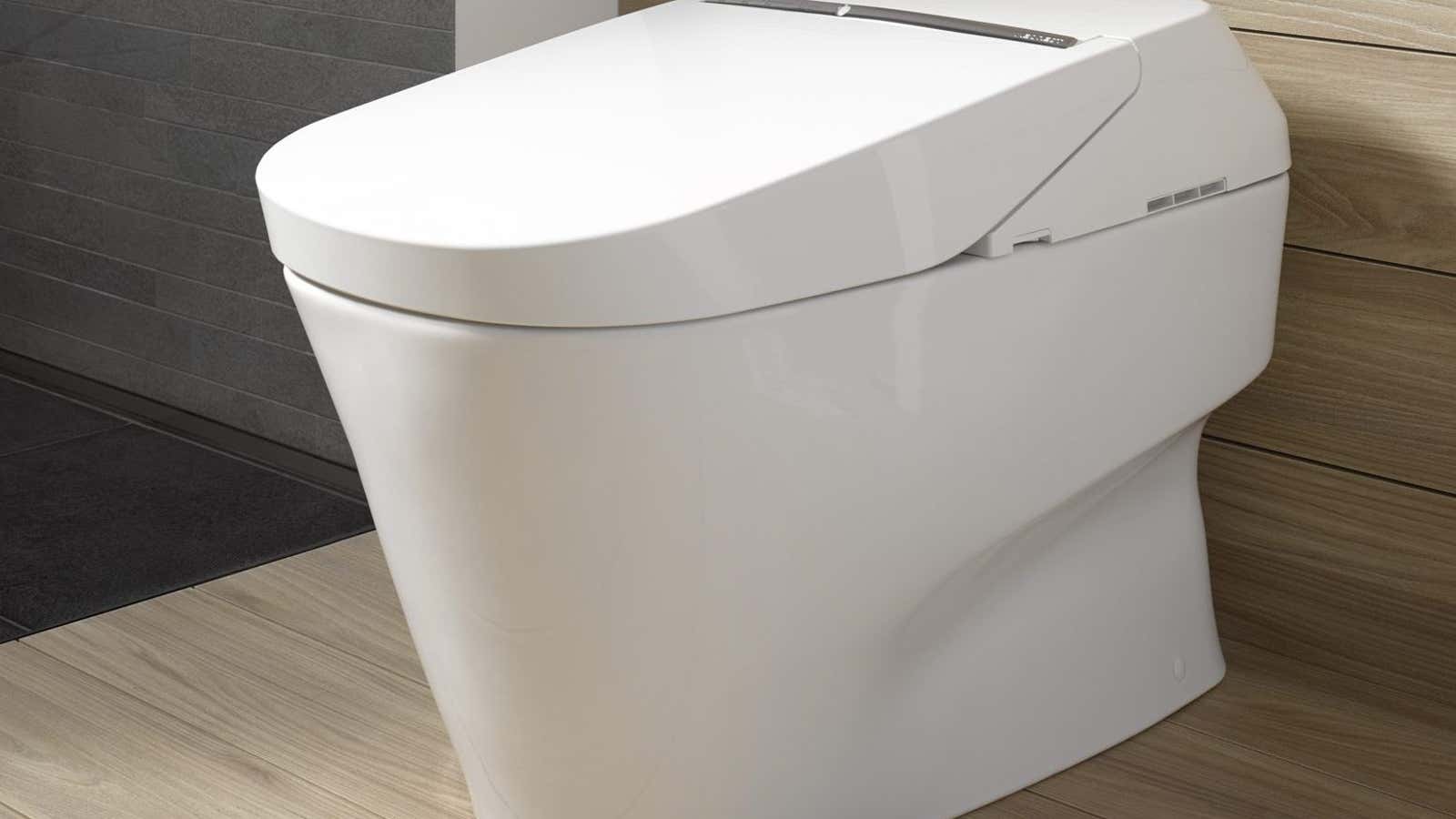There was no time for niceties. Adrian Grenier was there to talk toilets.
The 41-year-old actor and sustainability advocate was in New York City on Dec. 14 to discuss his love for Japanese toilets—specifically one $10,200 “intelligent toilet” manufactured by TOTO. In the midst of converting his mom’s five-story Brooklyn fixer upper into a green technology-powered dream house, Grenier struck a sponsorship deal with the world’s largest toilet manufacturer. He says that TOTO’s deluxe model was just the right unit to fulfill his “sustainability plus luxury” design brief.
“My mother raised me to be conscientious about the world and people and is really responsible for me becoming an environmentalist,” says the Entourage star, who was appointed a UN Environment Goodwill Ambassador in June. “If I’m building a house for my mother, it has to reflect the values she instilled in me. And of course, I want nothing but the best for my mom,” says Grenier.
While he was talking, the glowing toilet nearby gently popped open—like a clam or a flower in bloom—the seat lifting as if expecting a male user.
“It gets to know you. It’s smarter than most people,” Grenier says, eyeing the Neorest 750H as it flushed and finished the cycle with the lid closing automatically. “We call that feature, ‘the marriage saver,'” adds TOTO spokesperson Lenora Campos.
Americans and bidets
For Americans, the most novel feature of the Neorest unit may be the retractable “cleaning wand.” which functions as a bidet. Also known as a “health faucet,” a bidet is a nozzle that sprays water to clean the nether regions after using the toilet. Bidets or toilet-side hoses are standard bathroom fixtures in many countries in Europe, Latin America and Asia—in the US, not so much!
The Neorest 750H includes a remote control that allows owners to program preferences for the toilet seat’s temperature and water jet pressure, and calibrate the temperature of the drying air puffs.
Despite health and environmental warnings, Americans still stubbornly choose paper for cleaning their nether regions. A Scientific American article points out that Americans use an average of 36.5 billion rolls of toilet paper ever year. Switching to bathroom bidets could save some 15 million trees. Doctors also warn that aside from being ineffective, wiping with dry toilet paper even cause painful fissures and hemorrhoids.
The US attitude about bidets has something to do with its history, as Andrew Spena expounds on the Mic:
Bidets originated in France in the 18th century. At that time, France’s frenemy, England, felt bidets smacked of French “hedonism and sensuality,” and rejected them outright. That belief jumped across the pond to America and solidified into a mindset. This connotation was further cemented in the minds of WWII soldiers, who brought home with them their memories of seeing bidets in French brothels.
Stuck on toilet paper
TOTO has been pitching the hygienic bidet idea to Americans for more than a decade—partially with the goal of reducing paper waste.”We use water to clean everything else in our lives: dishes, clothes. At this critical juncture, you use paper?,” Campos said to the New York Times (paywall) in 2007. She explains that bidets weren’t common in Japan until TOTO introduced it in the 1980’s. More than 80% of Japanese households now have bidets.
Could this luxury, celebrity-endorsed be the luxury toilet to convince get Americans to ditch their TP habit?
While he is certainly biased, Grenier believes that the Neorest’s high-tech cleansing alternative could…er…wipe away at least part of America’s reliance on paper. “We need to embrace technologies that are more hygienic and save the planet a little bit,” he says. But even if a $10,000 fancy bidet is out of the budget, there are affordable options. Washlets or hose attachments readily available on Amazon or home appliance stores can be mounted on an existing toilet for under $50. TOTO even sells free-standing bidet units for around $400.
